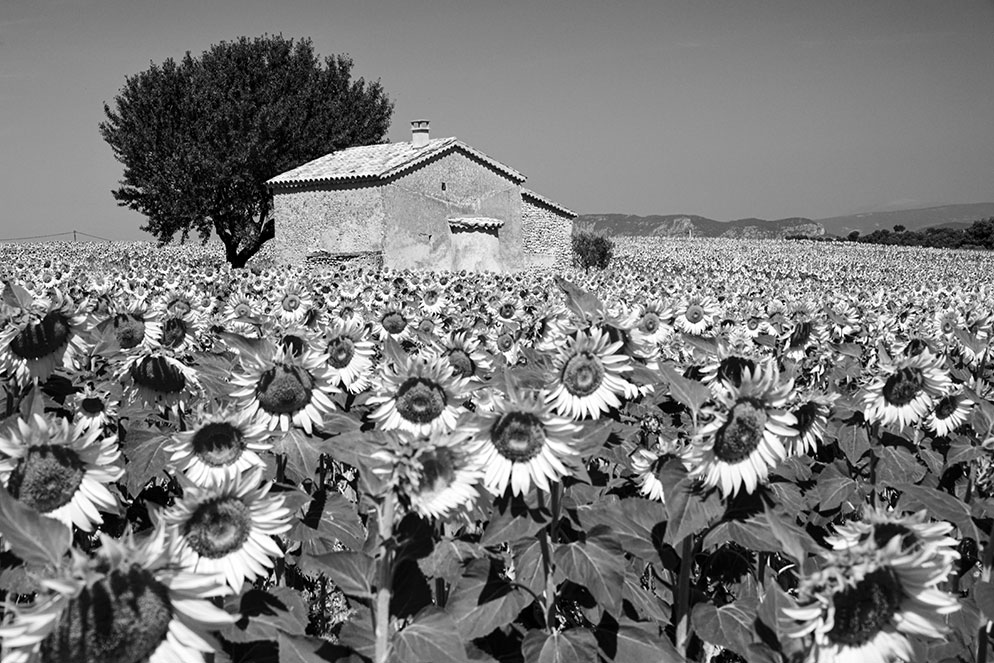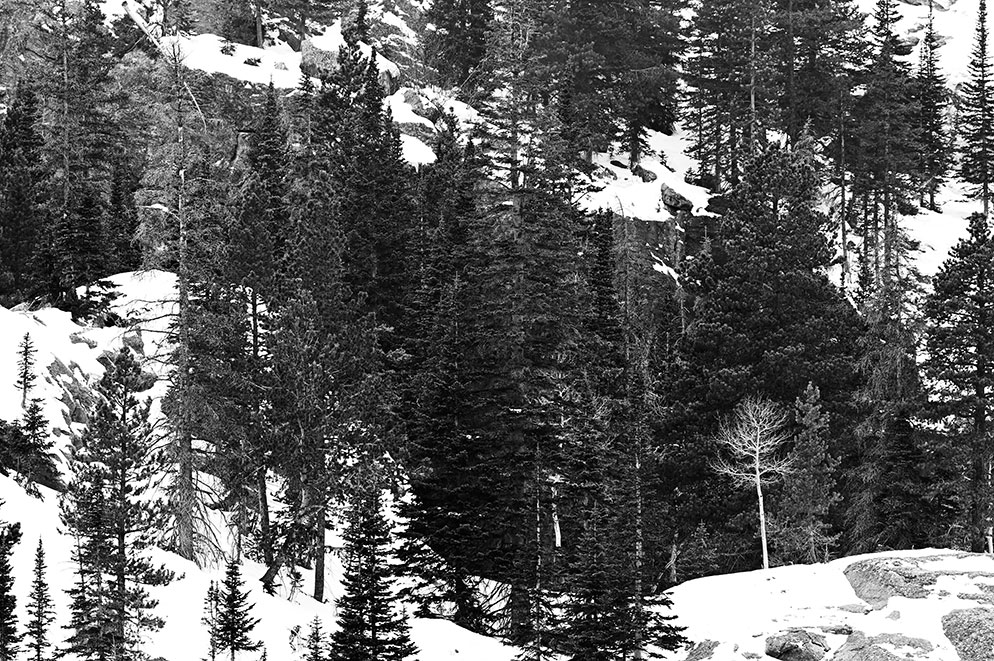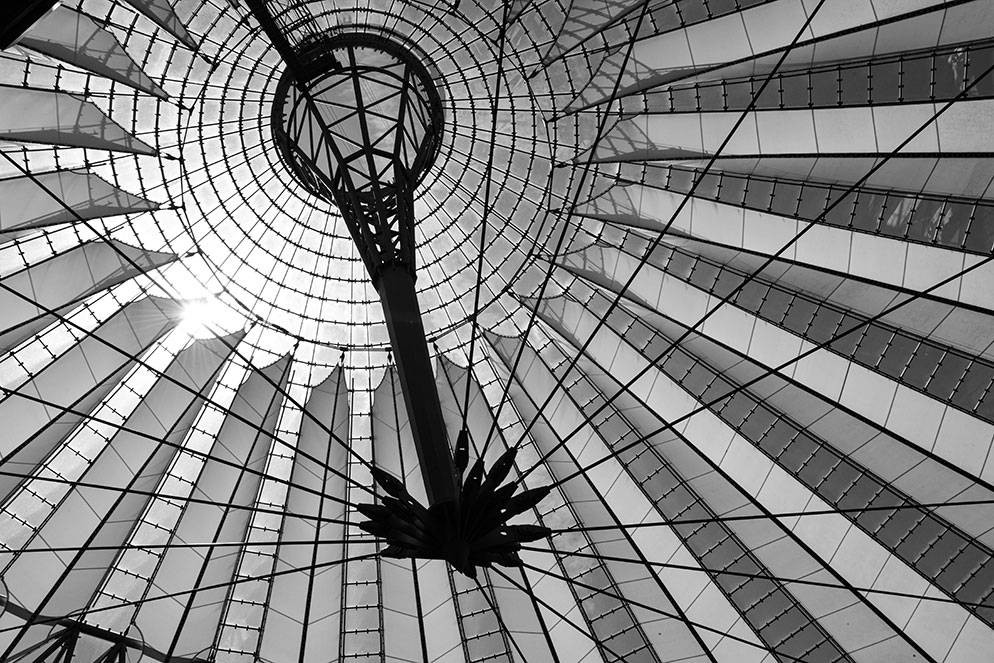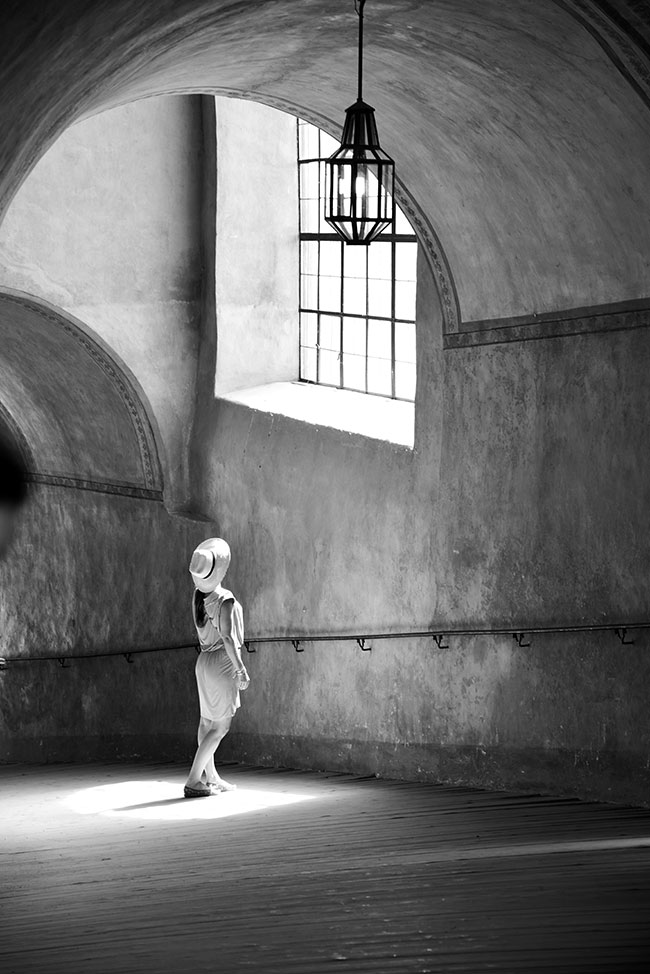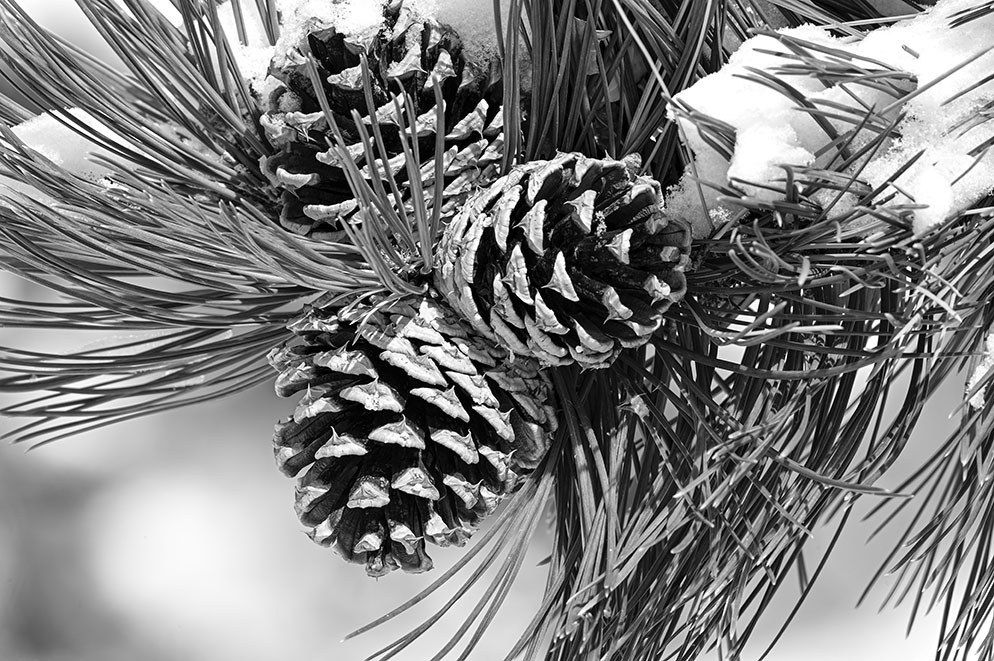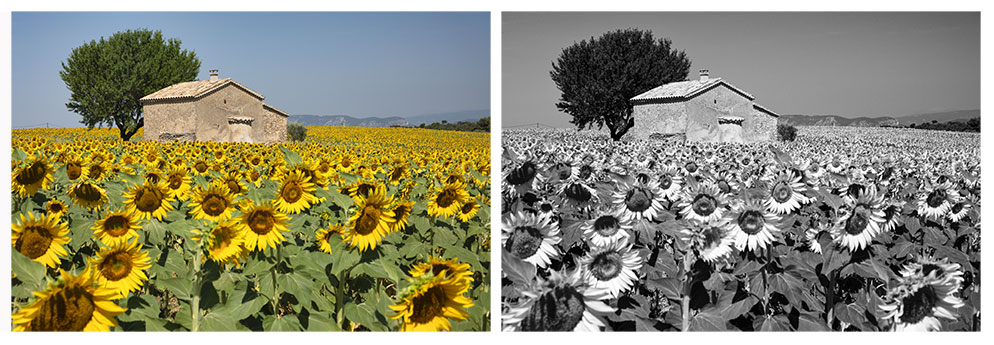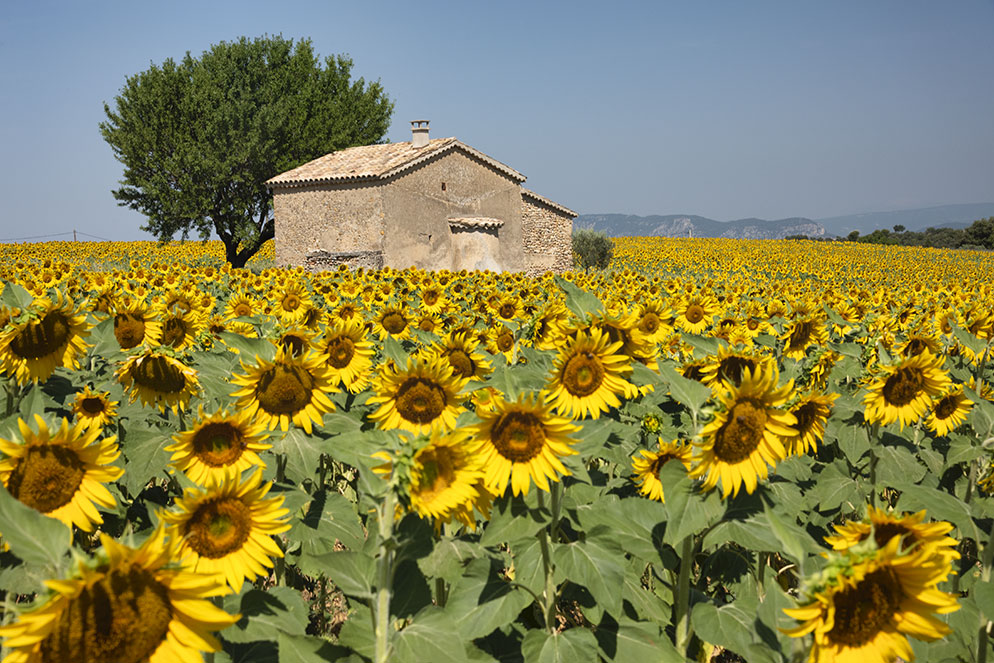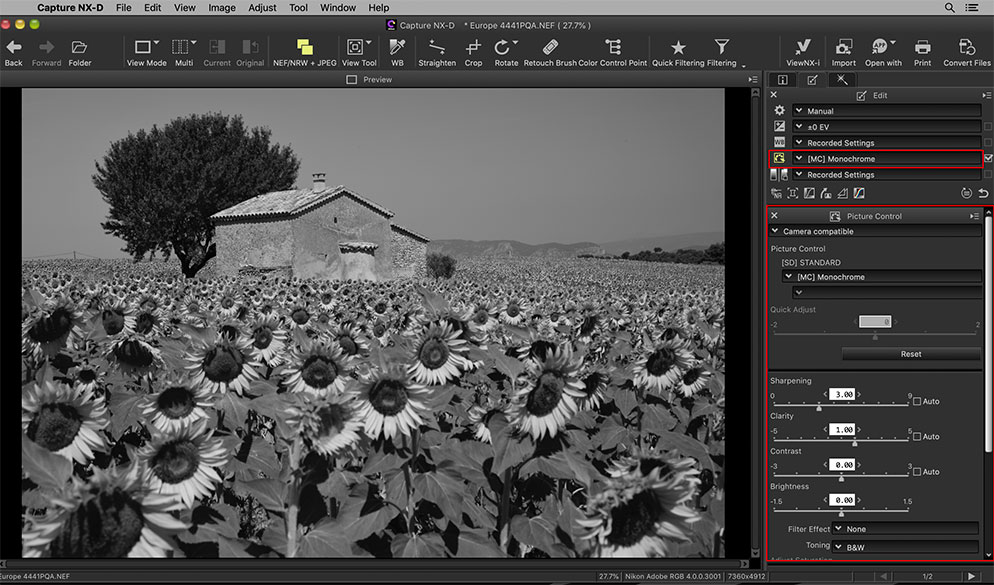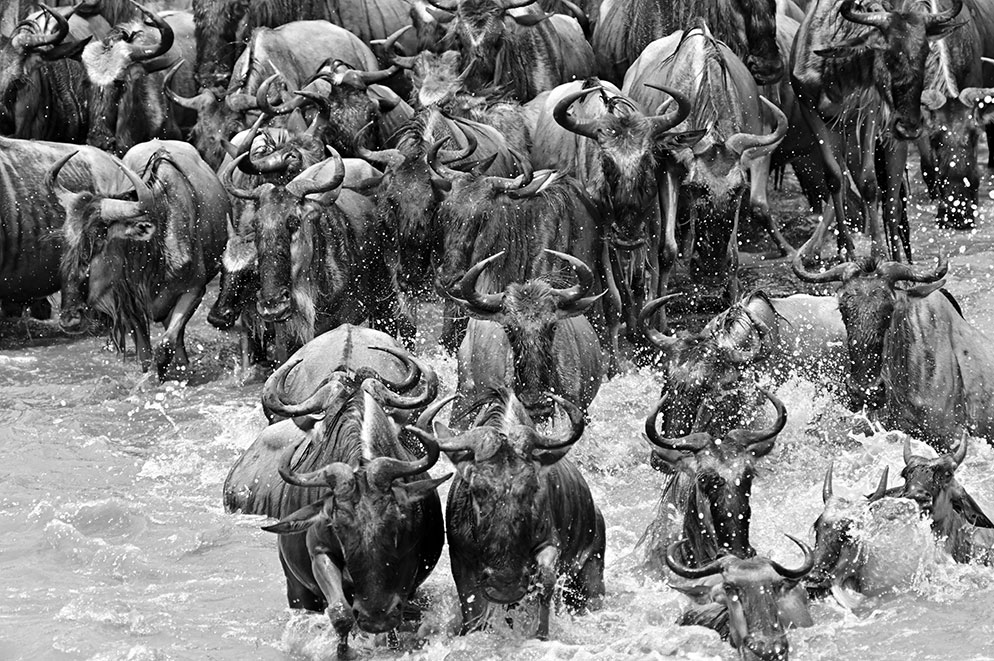The Big Switch: How to Bring New Life to Old(er) Images
Converting color to B&W using Picture Controls
"I shoot at Bear Lake, in Colorado, about four times a year," Deb says. "In the fall there are the golden aspens, and in this winter photo an aspen is the lone tree among the mostly darker ones. When I got home I used the Graphite picture control in Capture NX-D to make the story of that singular tree more intense and individualistic." Z 6, AF-S NIKKOR 500mm f/5.6E PF ED VR, Mount Adapter FTZ, 1/60 second, f/11, ISO 800, manual exposure, Matrix metering.
It wasn't that long ago that Nikon Ambassador Deborah Sandidge spent some time in the company of her own photographic archives. Which is not exactly how Deb phrased it. "I was creating some new stories," she says. And she did that by converting some of her color images to black and white.
It's an exercise of imagination, trial-and-error and post-processing control. Most of all, it's a second look at images you might be quite familiar with or, frankly, hardly even remember.
"There's a lot of new, futuristic architecture in Berlin, and this ceiling is in a building center on Potsdamer Platz," Deb says. "I looked up and it felt like I was inside a hot-air balloon. The picture was fine in color, but I thought black and white would show light and shadow and the texture patterns in a very strong, more abstract way." D810, AF-S NIKKOR 28-300mm f/3.5-5.6G ED VR, 1/250 second, f/16, ISO 200, manual exposure, Matrix metering.
"I get some distance from the photograph," Deb says. "When I'm shooting I have this idea, this concept I want to work with, and I usually get emotionally connected to things when I shoot them. But if after time I go back and take a look at the picture, I often see things a bit differently."
That's the key word: different. "Seeing a color picture as a black and white is so different," Deb says. "It can tell a completely different story." Without the element of color, the image takes on a new narrative—one of light, shadow, contrast, texture and detail.
And all it takes to explore the possibilities is to take a step back, get some distance from your photographs and see if they have a different story to tell.
Deb took this photo in an elevated passageway in the historic center of Cesky Krumlov in the Czech Republic. "The combination of the window, the lantern and the light pouring in was irresistible, but I needed someone in the beautiful light, so I asked our workshop's local guide to stand in. Later, going back over the files, I realized it was one my favorite pictures and turning it into a black-and-white image gave it a timeless look that seemed to best represent the city." D810, AF-S NIKKOR 24-120mm f/4G ED VR, 1/60 second, f/5.6, ISO 250, manual exposure, Matrix metering.
Color's Control
Color in an image can be beautiful, compelling, dramatic—and controlling. It demands attention, and sometimes you don't want that. Sometimes an image is simpler in black and white. Sometimes removing color makes an image stronger.
"Just think of the emotional connotations of color," Deb says. "Blue is peaceful; red is bold and dramatic; yellow is very cheerful. Take those connotations away and the picture tells a different story automatically—a story told by textures, shadows, shapes and contrasts."
Lake Monroe in Sanford, Florida, is an area Deb visits frequently. "The color picture was fine," she says, "but when I was reviewing images I thought black and white would accentuate the definition in the clouds and the smoothness of the water." D4, AF-S NIKKOR 16-35mm f/4G ED VR, 25 seconds, f/22, ISO 200, manual exposure, Matrix metering.
Without the obvious signals color delivers, it's often a subtler story, one you have to discover or decipher. "The emotional triggers aren't there," Deb says. "Other things become the triggers."
So the lone aspen tree in the rugged Colorado landscape isn't lost in the midst of winter evergreens; it becomes the hero of the image. And the soaring sky-lit architecture of a Berlin city-center complex becomes an abstract study of light, shadow and texture. And Tanzanian wildebeests (below) become even more intense and menacing.
Think of some of your colorful images. Now imagine the possibilities—even the surprises—black and white might bring.
It took a 500mm lens for Deb to get these pinecones high up in a tree in Endo Valley, Colorado. "The color photos were interesting," she says, "but when I converted them to black and white, it became more of a story about tones, patterns and textures, all of which black and white emphasized." Z 6, AF-S NIKKOR 500mm f/5.6E PF ED VR, Mount Adapter FTZ, 1/160 second, f/16, ISO 500, manual exposure, Matrix metering.
Seeing a color picture as a black and white can tell a completely different story.
Making the Change
There are several ways to make the conversion from color to black and white. Some are better than others, but all offer you choice and control.
Naturally, we recommend using Nikon View-NX-i or Capture NX-D programs. Both are free downloads and are part of the Nikon imaging system, designed to unlock all the power of the Nikon Electronic File (NEF), our RAW-file capture of an image. The main differences between the two programs is that View NX-i is more of a vewing program and Capture NX-D has more image editing features to further develop your images.
Deb used Capture NX-D for the photos for this story.
The only requirement of using Capture NX-D for your color-to-monochrome conversion is that the image you want to convert was shot as a RAW file. Deb shoots RAW and RAW + JPEG with her Nikon cameras—RAW most of the time, RAW + JPEG sometimes. If the photos you want to work with weren't shot in RAW format, there are third-party software programs that'll do the conversion.
The color to black-and-white change offers a variety of creative choices, especially when Capture NX-D is involved. Select the images you want to consider converting in the program and view them individually or as thumbnails in a gallery-like view. Capture NX-D offers you a range of options and effects in its Picture Controls menu for your black-and-white conversion. Adjustments include sharpness, brightness, contrast and filter effects.
Wildebeests crossing the Mara River in Tanzania. "I'd gotten back and processed the photos rather quickly," Deb says. "Later I revisited the files to see if there were alternative views. When I converted this one to black and white, the wildebeests lost some of their reality and became almost otherworldly—and certainly more intense and menacing. My eye always goes to the possessed-looking one in the middle." Z 6, AF-S NIKKOR 200-500mm f/5.6E ED VR, AF-S Teleconverter TC-14E II, Mount Adapter FTZ, 1/1250 second, f/9, ISO 1000, shutter-priority exposure, Matrix metering.
Deb finds filter effects "the most effective and influential change" she can make to her newly-converted black-and-white images. The digital filters—yellow, orange, red, green—will darken skies, emphasize clouds, differentiate tones, delineate foliage colors and change the perception of the dark and light tones.
The changes you make with Capture NX-D will be saved as a separate image file; the original NEF—the RAW file—is never altered.
Like most things digital, it's pretty magical stuff, and the decisions that you make along the way will result in an image that's uniquely yours.

